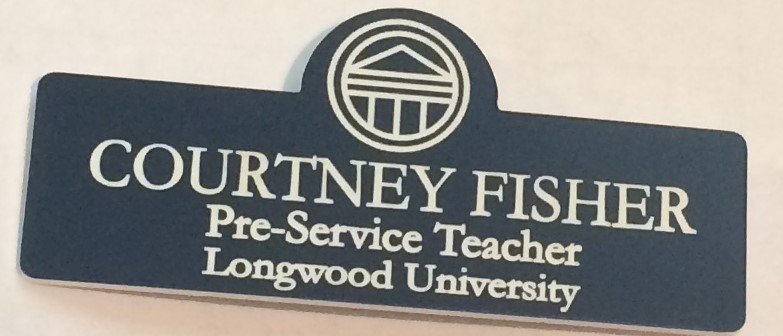Hello! My name is Courtney Fisher and I a senior pre-service teacher for English Secondary Education at Longwood University. I have completed all of my coursework, and I only have student teaching left to complete before I begin my teaching career. As I progressed through the teaching program at Longwood, my philosophy of education has developed a great deal, and will continue to change as I gain more experience and knowledge about teaching. I strongly believe that all students should feel capable of being successful, and know that I believe in their ability to do so. Regardless of a student’s culture, religion, socio-economic status, language, sexual orientation, background knowledge, learning disability or any unique characteristic that they possess, I will strive to ensure that students feel wanted and supported in my class. As an English teacher, I have the incredible resources of literature and writing to expose students to other cultures and incorporate all of their own personal cultures into the classroom. Using literature from authors that come from a plethora of backgrounds will help students from different cultures to feel more connected to the curriculum, as can see themselves in the content that they are learning.
I also intend to make students feel capable and important in my class through my behavior management strategies. I think the power of praise and reinforcement is much stronger than the power of punishment, so I will give students positive reinforcement whenever possible. It is vital to build students up to make them realize that they are capable, rather than tearing them down through criticism. I realize that it will sometimes be necessary to correct students’ behavior, but I intend to follow that up with praise if they alter their behavior to fit what I asked them to do. It is also important to me to allow students to have a voice in classroom rules, and to create a set of rules for me to follow as well. The classroom belongs to the students just as much as it does to me, so I want them to know that they do have a say in how they are treated and what they are expected to do.
In terms of instruction, I place a heavy emphasis on differentiation and scaffolding to help students learn. Each classroom contains a diverse assortment of learners with very different learning needs. I intend to create instruction that can be taught in multiple ways to ensure that individuals who have different styles can all understand the content. Students should all be doing coursework that is appropriately challenging for their individual performance abilities so that they can learn and progress into more difficult work throughout the school year. I also value incorporating student’s interest into the assignments. In an English classroom, this can be accomplished in a number of ways, including allowing students to write about topics the interests them or allowing them to read texts that they find interesting. Students should also be scaffolded into challenging work by seeing the skill they are expected to demonstrate modeled for them step by step, and then having time to practice the skill within a group or with guidance from the teacher.
On the sample work section of this website, you will find examples of work that I created which reflect my educational values. The lesson plans that I have included display my desire to differentiate instruction and scaffold students into practicing skills on their own. I show students a multiple methods to use for reading comprehension, and provide them with a great deal of choice as they revise for elaboration and tone. In both sample lessons, I scaffold the students into the skills by modeling the skill for them, doing guided practice examples with the class, and then having the students perform the skill independently. This provides ample time for students to identify the process and practice with it, as well giving me opportunities to formatively assess their progress. The sample rubric that I created shows that I value clearly laying out my expectations for each assignment, and giving students the opportunity to practice using the rubric they will be assessed on to make sure they understand each element of the assignment. To exemplify my mission to ensure that all students feel welcome and valued in my classroom, I incorporated a text set from a unit on dialectic diversity, which exposes students to a variety of American dialects. The final document I have included is a student interest inventory, which I believe will help me to foster strong relationships with students and incorporate their interests into the classroom. I believe that these samples provide an overview of my philosophy of education and who I am as a teacher.

